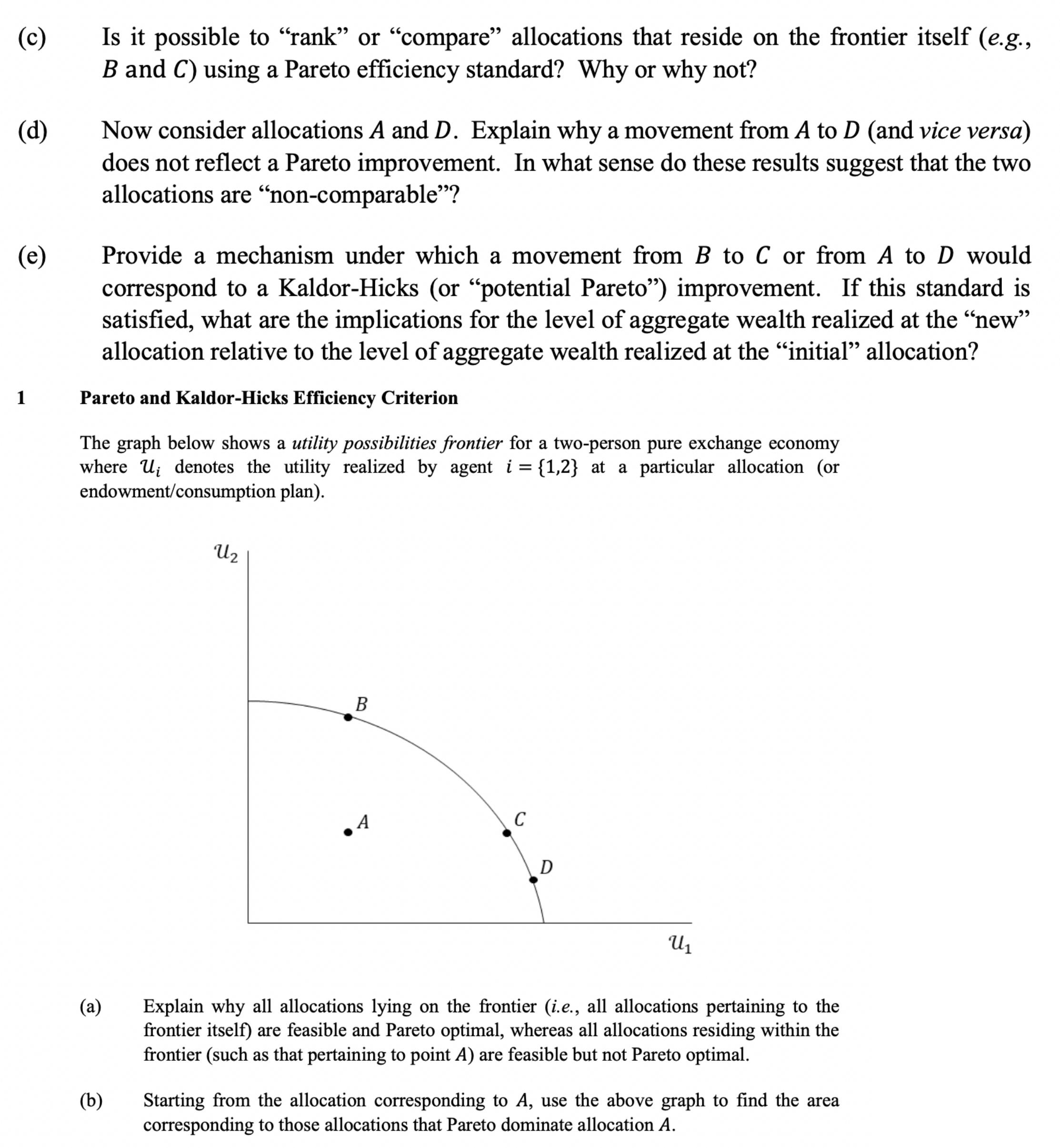Answered step by step
Verified Expert Solution
Question
1 Approved Answer
(c) Is it possible to rank or compare allocations that reside on the frontier itself (e.g., B and C) using a Pareto efficiency standard?

(c) Is it possible to "rank" or "compare" allocations that reside on the frontier itself (e.g., B and C) using a Pareto efficiency standard? Why or why not? (d) (e) 1 Now consider allocations A and D. Explain why a movement from A to D (and vice versa) does not reflect a Pareto improvement. In what sense do these results suggest that the two allocations are "non-comparable"? Provide a mechanism under which a movement from B to C or from A to D would correspond to a Kaldor-Hicks (or "potential Pareto") improvement. If this standard is satisfied, what are the implications for the level of aggregate wealth realized at the "new" allocation relative to the level of aggregate wealth realized at the "initial" allocation? Pareto and Kaldor-Hicks Efficiency Criterion The graph below shows a utility possibilities frontier for a two-person pure exchange economy where u denotes the utility realized by agent i = {1,2} at a particular allocation (or endowment/consumption plan). B A C D U (a) Explain why all allocations lying on the frontier (i.e., all allocations pertaining to the frontier itself) are feasible and Pareto optimal, whereas all allocations residing within the frontier (such as that pertaining to point A) are feasible but not Pareto optimal. (b) Starting from the allocation corresponding to A, use the above graph to find the area corresponding to those allocations that Pareto dominate allocation A.
Step by Step Solution
There are 3 Steps involved in it
Step: 1

Get Instant Access to Expert-Tailored Solutions
See step-by-step solutions with expert insights and AI powered tools for academic success
Step: 2

Step: 3

Ace Your Homework with AI
Get the answers you need in no time with our AI-driven, step-by-step assistance
Get Started


